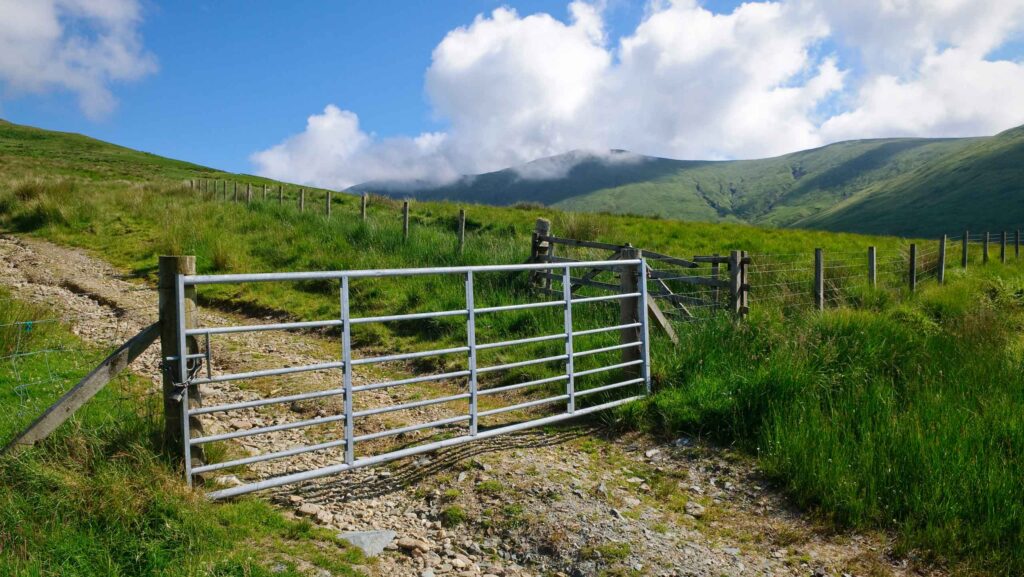Scottish land reform proposals met with criticism and praise
 © Adobe Stock
© Adobe Stock It is early days in the path of Scotland’s latest land reform plans, which are seen as broadly positive by tenant and community interests but as an invasion of privacy accompanied by costly and unnecessary interference in a free market by others.
Published on 13 March, the Land Reform (Scotland) Bill has several aims.
These include improving the transparency of land ownership and a proposal that the sale of any land holding larger than 1,000ha would come under government scrutiny – with the possibility of an order being made that it be lotted into smaller parcels.
Aside from the cost and complexity this would add, the move would make private or “off market” sales impossible, it would delay completion of sales and affect values, say agents.
See also: Land market review 2023 – Scotland
The proposals are in part designed to address the concentration of land ownership in Scotland.
Those opposed to the bill have variously described it as destructive, disproportionate and dramatic, as well as unnecessary and unworkable.
Further detail is awaited before advisers, landowners and tenants can fully understand how many of the measures would work in practice, should they survive the legislative process.
The bill takes a two-pronged approach to the management and sale of larger holdings.
Land management plan
First, to improve the transparency of land ownership and its management, it sets out that owners of holdings larger than 3,000ha must draw up a land management plan and engage with the community on the development of the plan and any subsequent significant changes to it.
The plan must be publicly available, and reviewed and revised at least every five years (see “Contents of land management plans”).
Lotting of large holdings for sale
Second, there will be a requirement for prior notification to community bodies when an owner intends to transfer a large landholding (1,000ha-plus) or part of it.
Those community bodies must be given an opportunity to buy the land.
Alongside this is the introduction of the assessment as to whether transfers of 1,000ha or larger should be lotted into smaller parcels.
Owners of large landholdings must also consider reasonable requests from communities to lease land or buildings.
Secondary legislation will set out the detail of what will be required to meet the obligation to engage with communities, for land management plans and covering how decisions are to be reached on lotting of larger sales.
Contents of land management plans
A land management plan includes:
- Details of the land and its owner
- The long-term vision and objectives for management of the land, including future sale potential
- How the landowner is demonstrating compliance with obligations relating to land (for example, those in the Scottish Outdoor Access Code and Deer Code)
- How land is being managed in a way that contributes towards net zero emissions targets, adapting to climate change and increasing or sustaining biodiversity.
Landowner opposition
The proposals have been described as destructive and disproportionate by Scottish Land & Estates (SLE), which represents landowners and says the bill is an attack on land-based businesses which risks derailing the pursuit of net zero.
While the organisation supports increased transparency and sees merit in land management plans, it condemns some of the bill’s other measures as unnecessary and unworkable.
“The impact on people, jobs and nature will be significant,” says SLE chief executive Sarah-Jane Laing.
“Some of the measures signal a huge U-turn by ministers from utilising land to pursue net zero towards a full-on attack on the property rights of large farms and estates.
Ministers would not countenance taking the same approach to any other business sector.”
SLE says well-established mechanisms already exist for communities to influence how land is used and that sales to communities are taking place on a willing seller basis, with statutory routes to ownership where negotiated sales do not take place. It also criticised retrospective measures on tenancies.
Andrew Aitchison, Strutt & Parker’s head of rural in Scotland, says that while the requirement for a publicly available land management plan for 3,000ha plus landholdings would add a layer of bureaucracy, it could also be seen as a mechanism to provide a platform to share positive messages about what estates are doing, and to highlight the complexity and costs associated with managing them.
Tenancy measures
The tenancy measures are wide-ranging and based on recommendations from Scotland’s Tenant Farming Commissioner following work with the Tenant Farming Advisory Forum.
They affect both traditional secure leases and modern limited duration tenancies and include a speedier approach to waygo – arrangements at the end of a tenancy – so that if there is a dispute, a valuer can be appointed rather than, as now, taking the land court route.
Where tenanted land is taken back in hand, known as resumption, the bill provides for better compensation, so that tenants will receive about half of the difference between tenanted and vacant possession value for the area affected.
Diversification will be made easier by changing the grounds for landlord’s objections, especially for greening and environmental measures, also giving tenants greater scope to invest in their holdings.
The bill also modernises the rules of good husbandry and estate management to allow tenants to alter land use so that they can farm in a more sustainable and environmentally friendly way.
A new formula for setting rents will take productive capacity as well as comparable rents into account, alongside the economic conditions in the relevant sector of agriculture.
Deer and game damage on tenanted land is a growing problem, and the bill provides for tenants to receive compensation for a much wider range of issues.
This will cover not only crop damage as at present, but also damage to fixed equipment such as fences and dykes, and to livestock through tick borne diseases. Habitat and biodiversity damage will also be compensated.
There is a commitment to introduce a new form of tenancy aimed at allowing environmental land uses so that tenants can access more of these opportunities.
Scottish Tenant Farmers Association chairman Christopher Nicholson says the bill incorporates measures necessary to allow tenant farmers fair access to future support schemes and markets which seek to reward biodiversity and climate change mitigation in addition to food production.
“Given the increase in resumptions over recent years with landlords seeking to benefit from green capital investments, the modernisation of compensation for resumptions is key to maintaining fairness in the tenanted sector,” he says.

© Adobe Stock
Potential impact on land market
The loss of private, or off market, sales would have a considerable impact, say agents.
As elsewhere, these are conducted without public advertising and offered only to a select, known number of potential buyers.
They are highly valued by buyers and sellers alike for the privacy and exclusivity they offer and the ability to manage the process.
At law firm Brodies, like many others commenting on the bill, partner Clive Phillips says that the consequences of the proposals are difficult to predict.
“It may, in fact, increase the volume of transactions,” he says, “but it does mean that buyers and sellers are no longer in control of the market.”
Most observers are waiting for further detail surrounding how decisions will be made as to whether a large land sale must be lotted and in what proportion.
“The Scottish rural market is multi-faceted, extending to agriculture, forestry investment, natural capital, sporting, renewables and tourism, and the proposals would seem to be complicating a market in which transactions are already inherently complex and at times fragile,” says Clive.
He suggests that balancing the objectives of meeting environmental and climate measures, which are often most successfully delivered at scale, will provide a challenge for the government in the light of the bill’s proposals which seek also to meet the needs of communities and the economy.
“1,000ha is a relatively low bar in some locations, we don’t know what that will do to the market, for example, does it create a twin track market with a watershed for properties below that size?”
He points out that some of the tenancy changes cut across what has already been agreed between landlord and tenant.
Landlords might view those changes, such as compensation based on the value of the tenant’s interest in the lease on resumption of ground by the landlord, as an interference with freedom of contract and a further deterrent to future letting decisions.
Valuation challenge
Many observers agree valuation will become more of a challenge if the proposals become law as they stand.
Some speculate that it may bring sales forward that would later be caught by the 1,000ha threshold.
How many Scottish land sales would be affected by the 1,000ha rule?
Scottish Land Commission figures show that from 2020 to 2022, between five and 12 transactions a year were for landholdings larger than 1,000 ha.
The average size of Scottish estate sold in 2023 was 1,659ha, says land agent Strutt & Parker, with more than half selling for between £1m and £5m.
Robert McCulloch, the firm’s head of estates and farm agency in Scotland, says the proposals would effectively end private sales for estates larger than 1,000ha.
“This would be a significant change as 56% of transactions in 2023 occurred on an off-market basis,” he adds.
Investment in Scottish estates dipped slightly in 2023 due to global economic factors and a more cautious approach from natural capital investors, says the firm.
This resulted in £173m being spent buying Scottish estates, which is 8% less than in 2022.
84% of purchasers were UK-based and 16% were from overseas, consistent with the split in previous years.
